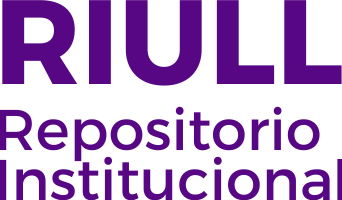Evaluación de la red colectiva de riego "El Rincón" en Buenavista del Norte.
Author
Torres Herrera, MarioDate
2023Abstract
The "El Rincón" collective network is part of the project for the Improvement of Irrigation on Isla Baja, which comprises a total of four networks. This network was implemented in 1998 and is still in operation at the time of this study. The aim of this work is to carry out an exhaustive evaluation to find out the current functioning of the network and to propose changes if necessary, as well as to make an
inventory of the network and to find out the consumption habits of the farmers. In order to know the current state of operation of the network, a simulation was carried out with the EPANET software. In addition, a simulation of a potential situation was carried out in which idle hydrants were taken into account. In order to obtain the necessary data for the simulation, all users of the network were surveyed. The results of the surveys, besides being useful to establish the EPANET data, were used to
analyse different agronomic and hydraulic parameters. In addition, a detailed inventory of all network components was carried out and compared with the inventory of the project “Mejora del Regadío en Isla Baja”. Additional data were also obtained from the company in charge of the network management, such as information on users' invoicing and data obtained by remote control, such as outflow, tank level and volume. Following the inventory, it was found that the network was almost entirely implemented according to the original project. It was found that some of the cabins
were missing, as well as many hydrants, which were either not installed or no longer in use. On the other hand, after analysing the data provided by BALTEN, inconsistencies were detected which may be due to poor management of the remote control. With regard to the simulations carried out with EPANET, it was found that the network is functioning correctly in the situation it is in at the time of the assessment.
Furthermore, the results of the potential evaluation showed that the network has been designed to be comfortable and that it does not present problems in more unfavourable situations. In conclusion, evaluations are very useful tools to identify problems in collective networks and to improve their efficiency. In addition, the EPANET programme is a
practical and simple tool to simulate the operation of irrigation networks. La red colectiva "El Rincón" forma parte del proyecto de Mejora del Regadío en Isla Baja, que abarca un total de cuatro redes. Esta red fue implementada en 1998 y sigue en funcionamiento hasta la fecha de la evaluación. El objetivo de este trabajo es llevar a cabo una evaluación exhaustiva con la finalidad de conocer el funcionamiento actual de la red y proponer cambios en caso de requerirlo, además de realizar un inventario de la red y conocer los hábitos de consumo de los agricultores. Para conocer el estado actual de funcionamiento de la red, se realizó una simulación con el software EPANET. Además, se realizó una simulación sobre una situación potencial en las que se tuvo en cuenta el funcionamiento de los hidrantes que se encuentran ociosos. Para la obtención de los datos necesarios para poder llevar
a cabo la simulación, se realizó una encuestas a todos los usuarios de la red. Los resultados de las mismas, además de ser útiles para establecer los datos que demanda el software EPANET, sirvieron para analizar los distintos parámetros agronómicos e
hidráulicos. Además, se realizó un inventario detallado de todos los componentes de la red y
se realizó una comparación con el proyecto “Mejora del Regadío en Isla Baja”. También se recabaron datos adicionales a través de la empresa encargada de la gestión de la red (BALTEN), como información sobre la facturación de los usuarios, datos obtenidos
mediante telecontrol, y caudal, volumen de salida y nivel del depósito de cabecera. Tras la realización del inventariado se observa que la red se ejecutó casi en la totalidad como se establece en el proyecto original. Se detectó la ausencia de algunas casetas y de hidrantes no instalados o en desuso. Por otro lado, tras analizar los datos facilitados por BALTEN, se detectó incoherencias que no ayudan al buen manejo de la red. En cuanto a las simulaciones realizadas con EPANET, se constató que la red
funciona correctamente en la situación en la que se encuentra a fecha de la evaluación. Además, los resultados de la evaluación de estrés arrojaron que la red se diseñó con holgura y que no presenta problemas en situaciones más desfavorables. En conclusión, las evaluaciones son herramientas muy útiles para identificar problemas en las redes colectivas y mejorar su eficiencia. El programa EPANET resulta una herramienta práctica y sencilla para simular el funcionamiento de las redes de
riego.




